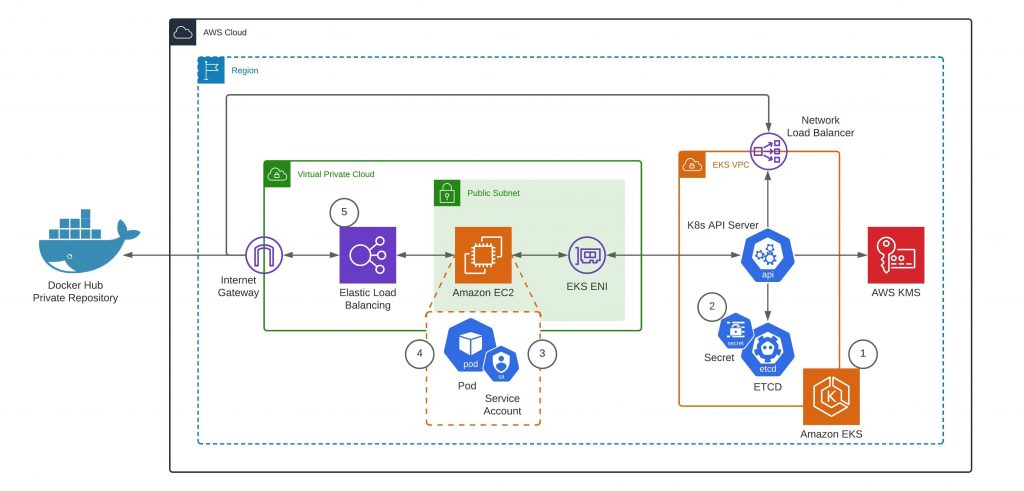Containers
Category: Amazon Elastic Container Service
Amazon Elastic Container Service Anomaly Detector using Amazon EventBridge
This post was contributed by Ugur KIRA and Santosh Kumar. This concept originated from discussions with Skyscanner UK regarding to manage ECS clusters at large scale. Amazon EventBridge is a serverless event bus that makes it easy to connect applications together using data from your own applications, integrated Software-as-a-Service (SaaS) applications, and AWS services. EventBridge […]
Klook Case Study
About Klook: Klook, a world-leading travel activities and services booking platform, empowers travelers to discover and book on-demand local attractions, tours, transportation, food and exclusive experiences in more than 350 destinations around the world. More than 30 million people in over 180 markets use Klook’s website and award-winning app every month. Klook platforms support 41 […]
Delivering tree insights at scale at Aerobotics
This post is contributed by Nic Coles, Head of Software Engineering, Aerobotics Aerobotics is an agri-tech company operating in 18 countries around the world, based out of Cape Town, South Africa. Our mission is to provide intelligent tools to feed the world. We aim to achieve this by providing farmers with actionable data and insights […]
Running Airflow on AWS Fargate
Apache Airflow is an open-source distributed workflow management platform that allows you to schedule, orchestrate, and monitor workflows. Airflow helps you automate and orchestrate complex data pipelines that can be multistep with inter-dependencies. This post presents a reference architecture where Airflow runs entirely on AWS Fargate with Amazon Elastic Container Service (ECS) as the orchestrator, […]
Authenticating with Docker Hub for AWS Container Services
Docker Hub has recently updated its terms of service to introduce rate limits for container image pulls. While these limits don’t apply to accounts under a Pro or Team plan, anonymous users are limited to 100 pulls per 6 hours per IP address, and authenticated free accounts are limited to 200 pulls per 6 hours. […]
Latest updates to AWS Fargate for Amazon ECS
Recently, we announced features to improve the configuration and metric gathering experience of your tasks deployed via AWS Fargate for Amazon ECS. Based off of customer feedback, we added the following features: Environment file support Deeper integration with AWS Secrets Manager using secret versions and JSON keys More granular network metrics, as well as additional […]
Introducing Amazon ECS Anywhere
In 2014, AWS introduced Amazon Elastic Container Service (Amazon ECS) as a simplified way for customers to address the complexity of managing containers on their EC2 instances at any scale. As adoption increased, customers responded with a new challenge: remove the undifferentiated heavy lifting of having to deal with EC2 instances. In 2018, we announced […]
Announcing Amazon ECS deployment circuit breaker
Today, we announced the Amazon ECS deployment circuit breaker for EC2 and Fargate compute types. With this feature, Amazon ECS customers can now automatically roll back unhealthy service deployments without the need for manual intervention. This empowers customers to quickly discover failed deployments, while not having to worry about resources being consumed for failing tasks, […]
re:Invent 2020: AWS Containers Track
re:Invent is a free, 3-week virtual conference that will be held November 30 – December 18, 2020. Starting this week, registered attendees can access scheduled and on-demand sessions on topics across AWS Services. In this post, we’ll cover the Containers track, featuring sessions on Amazon ECS, Amazon EKS, AWS Fargate, Amazon ECR, and AWS App […]
Accelerate modernization of your application using App2Container
Introduction Many enterprises want to modernize their existing applications and containerize them to minimize disruptions that could stem from clunky, outdated and unscalable legacy systems. These enterprises need tools to simplify the containerization process of existing Java and .NET applications and increase operational efficiency, harmonize CI/CD processes, and increase agility. AWS App2Container (A2C) enables companies […]







